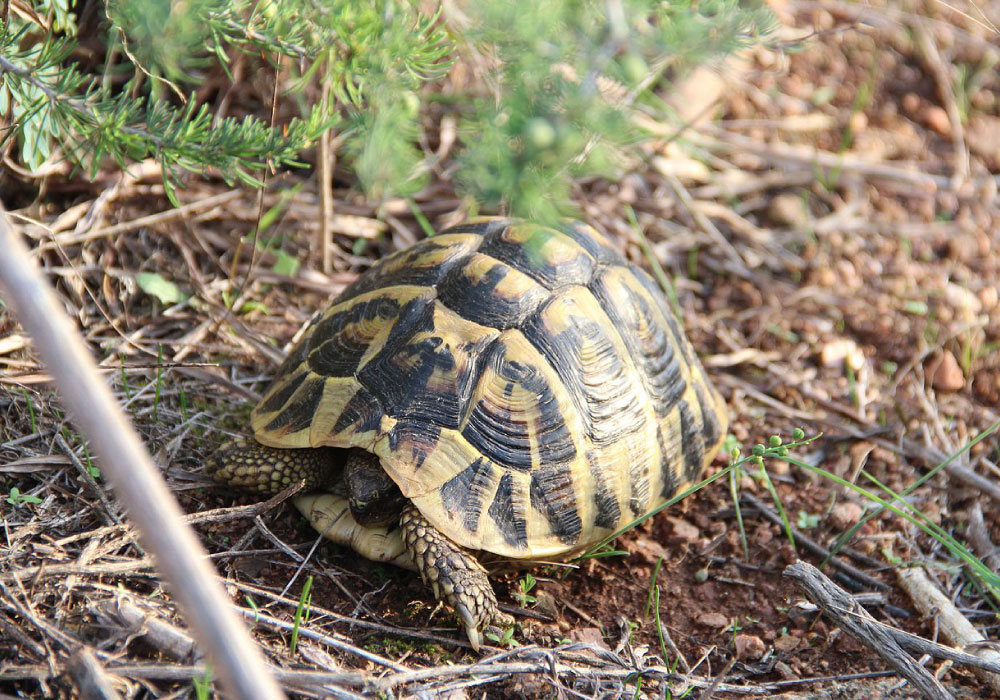Hermann tortoises, also known as European tortoises, are small to medium-sized tortoises native to parts of Eastern Europe. They are popular pets among reptile enthusiasts due to their charming personalities and manageable size. Before getting a Hermann tortoise, it is important to understand how big they can potentially grow.
Hermann Tortoise Size and Growth Rate
On average, Hermann tortoises reach a shell length of about 6-9 inches (15-23 cm) when fully grown. However, there are variations in size based on their subspecies – Eastern Hermann tortoise (Testudo hermanni boettgeri) and Western Hermann tortoise (Testudo hermanni hermanni).
The Eastern Hermann tortoise tends to grow slightly larger than the Western Hermann tortoise. Eastern Hermann tortoises can reach up to 9 inches (23 cm) in shell length, while Western Hermann tortoises usually reach around 6-8 inches (15-20 cm).
It is important to note that the growth rate of Hermann tortoises is relatively slow. They are known as a long-lived species, and it can take several years for them to reach their maximum size. The growth rate also depends on various factors like genetics, diet, and care provided.
Factors Affecting Tortoise Growth
Several factors can influence the growth rate of Hermann tortoises. These include:
- Diet: A well-balanced and nutritious diet is crucial for the healthy growth of Hermann tortoises. Their diet should consist of a variety of leafy greens, vegetables, and occasional fruits. Providing them with a calcium supplement is essential for proper shell development.
- Environment: Tortoises need appropriate housing and a suitable outdoor enclosure for natural exposure to sunlight. UVB lighting is necessary for their growth as it helps in the synthesis of vitamin D3, which aids in calcium absorption.
- Temperature: Maintaining the correct temperature is essential for tortoise growth and overall health. They require a temperature gradient in their enclosure, including a basking spot with a heat source to regulate their body temperature.
- Genetics: The growth rate and maximum size of Hermann tortoises can vary based on their genetic makeup. Some individuals may have a slower growth rate compared to others.
Age and Lifespan of Hermann Tortoises
Hermann tortoises are known for their longevity. They are considered one of the longer-lived tortoise species, with some individuals reaching ages of 50 years or more in captivity with proper care.
It is important to understand that owning a Hermann tortoise is a long-term commitment. They have a slow growth rate and can live for several decades. Providing them with the appropriate care and environment throughout their life is vital for their health and well-being.
:strip_icc()/GettyImages-582729546-5816adc23df78cc2e80fa42d.jpg)
Credit: www.thesprucepets.com

Credit: www.youtube.com
Conclusion
Hermann tortoises are small to medium-sized tortoises, with the Eastern Hermann tortoise growing slightly larger than the Western Hermann tortoise. On average, Hermann tortoises reach a shell length of about 6-9 inches (15-23 cm) when fully grown. However, the growth rate is slow, and it can take several years for them to reach their maximum size.
To promote healthy growth, it is important to provide your Hermann tortoise with a well-balanced diet, suitable housing, exposure to natural sunlight, and the appropriate temperature gradient. Remember, owning a Hermann tortoise is a long-term commitment, as they can live for several decades with proper care.






Leave a Reply